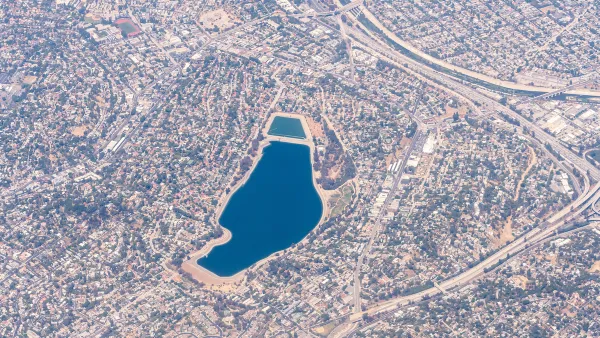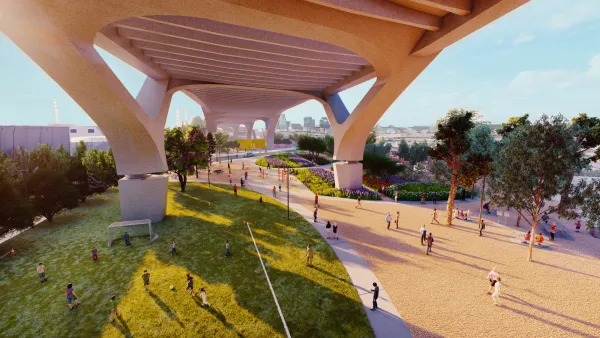Christopher Hawthorne completes his second installment in an ongoing series examining the transformation of Los Angeles through the lens of its famous boulevards. This entry focuses on the most famous street in the city - Sunset Boulevard.
Traversing Sunset "in the opposite direction", from west to east, Hawthorne explores the street's transformation as it points the way towards L.A.'s multimodal future. As he makes his way from the beach, and Sunset's famous gated enclaves on the west side of the city, towards the bustling nightlife of Hollywood and the eclectic street life of Boyle Heights, Hawthorne notes how the street provides (or fails to provide) a pedestrian-friendly environment.
Hawthorne describes the replacement of movie studios and entertainment-focused businesses with "hardier strains of L.A. architecture" along Sunset in Hollywood, as the city "tries to redefine itself for a denser and less car-dependent future." He also notes the newly opened Sunset Triangle Plaza, in Silver Lake, "A more nimble example of L.A.'s rekindled interest in street design and
the public sphere."
But what Hawthorne finds along Sunset (renamed Cesar E. Chavez Avenue) in the east L.A. neighborhood of Boyle Heights makes him most excited. "Shaded by huge ficus trees and crowded with pedestrians, the stretch of
Cesar Chavez just east of the 5 Freeway upends a few persistent
stereotypes about Los Angeles: that nobody walks, that everybody lives
in a single-family house, works in the movie business and spends most of
his time cocooned in an air-conditioned car, shouting Ari Gold-style
into his cellphone earpieces."
"Much of the street's success can be credited to neglect from the larger
city," writes Hawthorne, "as investment in the post-war era went elsewhere. But Cesar Chavez
Avenue hasn't just survived: It has emerged as a model for other
neighborhoods eager to make their major thoroughfares friendlier to
pedestrians, cyclists and local business. It has all the urban-design
amenities the average L.A. boulevard is desperately missing."
FULL STORY: For Sunset, a new dawn

Analysis: Cybertruck Fatality Rate Far Exceeds That of Ford Pinto
The Tesla Cybertruck was recalled seven times last year.

National Parks Layoffs Will Cause Communities to Lose Billions
Thousands of essential park workers were laid off this week, just before the busy spring break season.

Retro-silient?: America’s First “Eco-burb,” The Woodlands Turns 50
A master-planned community north of Houston offers lessons on green infrastructure and resilient design, but falls short of its founder’s lofty affordability and walkability goals.

Test News Post 1
This is a summary

Analysis: Cybertruck Fatality Rate Far Exceeds That of Ford Pinto
The Tesla Cybertruck was recalled seven times last year.

Test News Headline 46
Test for the image on the front page.
Urban Design for Planners 1: Software Tools
This six-course series explores essential urban design concepts using open source software and equips planners with the tools they need to participate fully in the urban design process.
Planning for Universal Design
Learn the tools for implementing Universal Design in planning regulations.
EMC Planning Group, Inc.
Planetizen
Planetizen
Mpact (formerly Rail~Volution)
Great Falls Development Authority, Inc.
HUDs Office of Policy Development and Research
NYU Wagner Graduate School of Public Service




























